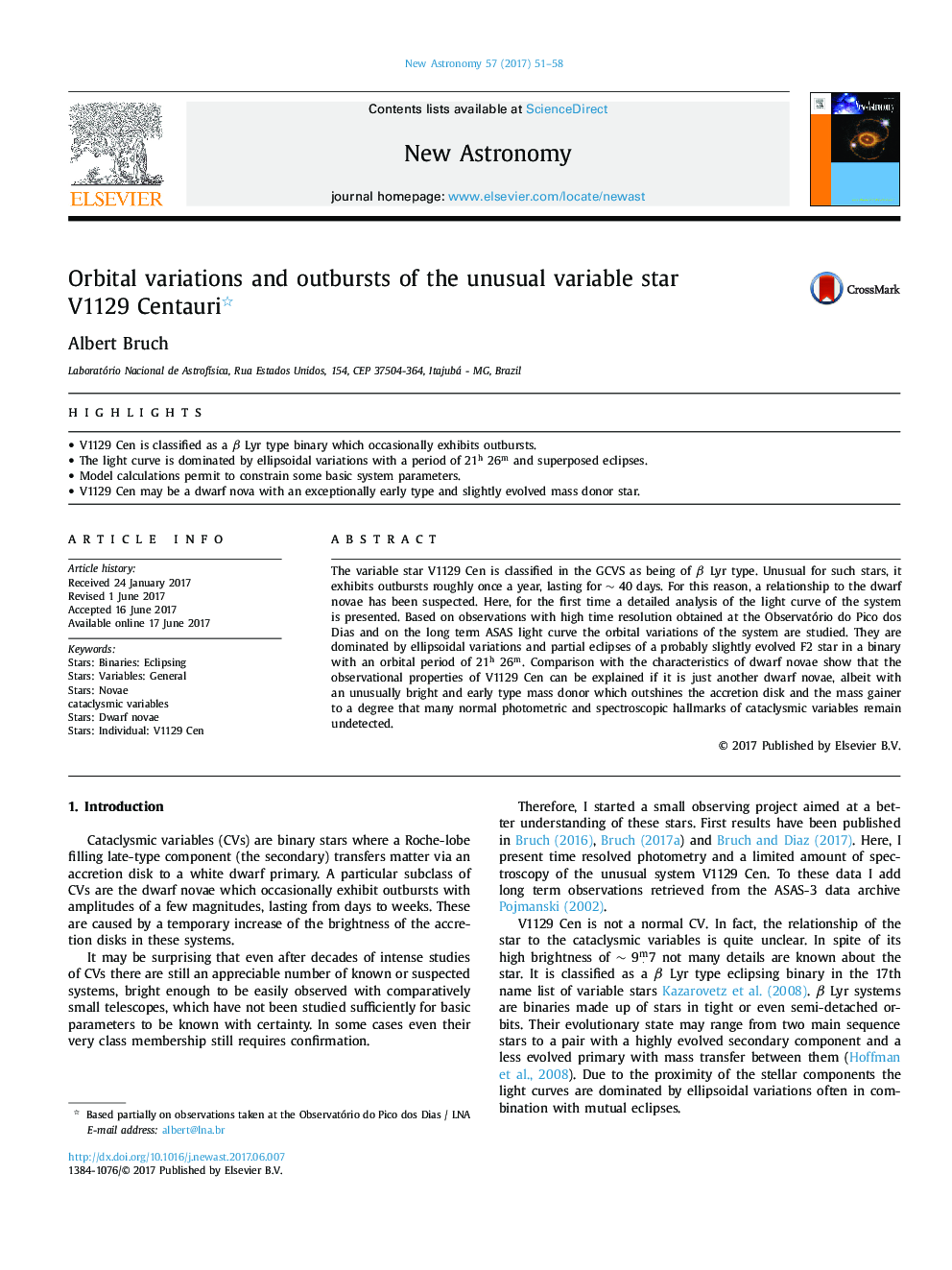| Article ID | Journal | Published Year | Pages | File Type |
|---|---|---|---|---|
| 5487738 | New Astronomy | 2017 | 8 Pages |
Abstract
The variable star V1129 Cen is classified in the GCVS as being of β Lyr type. Unusual for such stars, it exhibits outbursts roughly once a year, lasting for â¼ 40 days. For this reason, a relationship to the dwarf novae has been suspected. Here, for the first time a detailed analysis of the light curve of the system is presented. Based on observations with high time resolution obtained at the Observatório do Pico dos Dias and on the long term ASAS light curve the orbital variations of the system are studied. They are dominated by ellipsoidal variations and partial eclipses of a probably slightly evolved F2 star in a binary with an orbital period of 21h 26m. Comparison with the characteristics of dwarf novae show that the observational properties of V1129 Cen can be explained if it is just another dwarf novae, albeit with an unusually bright and early type mass donor which outshines the accretion disk and the mass gainer to a degree that many normal photometric and spectroscopic hallmarks of cataclysmic variables remain undetected.
Keywords
Related Topics
Physical Sciences and Engineering
Physics and Astronomy
Astronomy and Astrophysics
Authors
Albert Bruch,
